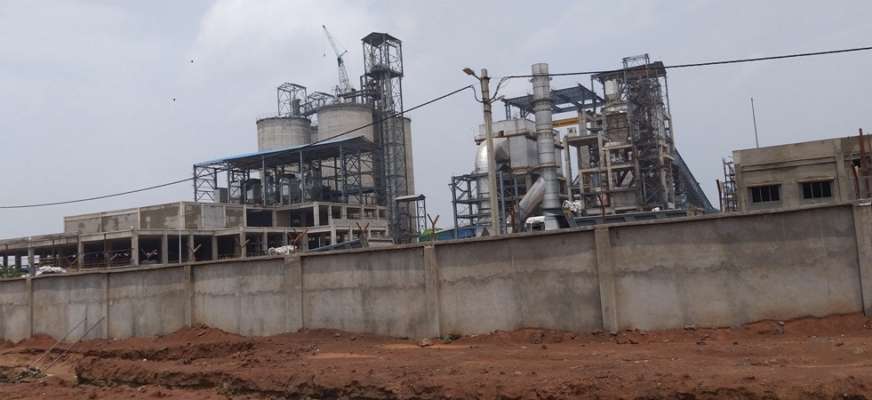Introduction
Industrialisation in Kalahandi District – A Study, located in the state of Odisha, India, is known for its rich cultural heritage and natural beauty. However, it has long been considered one of the most backward and economically underdeveloped regions in the country. In recent years, there has been a significant push towards industrialisation in the district, with the aim of improving the economic conditions of the region. This blog aims to provide an overview of the industrialisation efforts in Kalahandi District and the potential impact they may have on the local economy and community.
Reasons for Industrialisation
Industrialisation in Kalahandi District – A Study There are several factors that have led to the focus on industrialisation in Kalahandi District. One of the main reasons is the need to create employment opportunities for the local population. The district primarily relies on agriculture, which is highly susceptible to natural disasters and other external factors. By diversifying the economy through industrialisation, the district can reduce its dependence on agriculture and provide alternative sources of employment.
Another reason for industrialisation is to attract investment and boost the overall economic growth of the region. Kalahandi District is strategically located and has abundant natural resources, including minerals and forest produce. Leveraging these resources for industrial development can attract both domestic and foreign investors, leading to increased capital inflow and economic prosperity.

You can read our another post on Potagarh of Ganjam: A Hidden Gem in Odisha
Industrialisation Efforts
Various initiatives have been undertaken by the government and private sector to promote industrialisation in Kalahandi District. Special Economic Zones (SEZs) have been established to attract investment and provide necessary infrastructure for industries. The government has also simplified the process of acquiring land for industrial purposes and has provided incentives to encourage entrepreneurs to set up businesses in the district.
Industrialisation in Kalahandi District – A Study Efforts have been made to identify and promote specific sectors for industrial development. These include agro-processing industries, food processing units, mineral-based industries, and handicrafts. The aim is to create a diverse industrial ecosystem that leverages the unique strengths of the district while also promoting sustainable development.
Potential Impact
The industrialisation of Kalahandi District has the potential to bring about several positive changes. Firstly, it can create employment opportunities for the local population, reducing poverty and improving the overall standard of living. This will also lead to a decline in migration to urban areas and ensure balanced regional development.
Industrialisation can also lead to an increase in the per capita income of the district, as new industries generate more economic activity and contribute to the tax revenue. This, in turn, can improve access to healthcare, education, and other social services for the residents of Kalahandi.
However, it is essential to ensure that industrialisation is implemented in a sustainable and responsible manner. Efforts should be made to minimize environmental impact, protect natural resources, and promote inclusive growth. The government and other stakeholders need to prioritize the welfare of the local communities and ensure that their rights are respected throughout the process.
More: Wanted to download Odishashop.com visit here

Write A FAQ For Industrialisation in Kalahandi District – A Study
What is the significance of studying the industrialization in Kalahandi District?
Studying the industrialization in Kalahandi District is essential to understand the socioeconomic impact of industrial development in a region that has traditionally been dependent on agriculture. It can provide insights into the challenges and opportunities faced by the district, enabling policymakers to make informed decisions for sustainable development.
What are the key industries driving industrialization in Kalahandi District?
While Kalahandi District is known for its rich mineral resources, industries such as mining, minerals processing, and agro-based industries are driving the industrialization process. Additionally, the district has seen growth in sectors like textiles, handicrafts, and tourism, which contribute to local employment and income generation.
How has industrialization impacted the local community in Kalahandi District?
Industrialization in Kalahandi District has brought about significant changes in the local community. It has created employment opportunities, both directly and indirectly, leading to reduced migration and improved livelihoods. However, it has also raised concerns about environmental sustainability, displacement of indigenous populations, and social inequalities, necessitating a balanced approach towards development.
What are the major challenges faced by industries in Kalahandi District?
The industries in Kalahandi District face several challenges, including inadequate infrastructure, limited access to credit facilities, lack of skilled manpower, bureaucratic hurdles, and inadequate market linkages. Addressing these challenges requires collaboration between the government, industry players, and local communities to create an enabling environment for sustainable industrial growth.
How can the findings of this study help in formulating effective industrial policies for the district?
The findings of this study can provide valuable insights into the strengths, weaknesses, opportunities, and threats associated with industrialization in Kalahandi District. It can help policymakers understand the key issues and formulate evidence-based strategies and policies to promote industrial growth while addressing the social, economic, and environmental concerns of the region.
Conclusion
Industrialisation in Kalahandi District holds immense potential for economic development and improving the living conditions of the local population. With proper planning, implementation, and community engagement, it can be a powerful tool for transforming the district and unlocking its true potential. However, it is important to strike a balance between economic growth and sustainability to ensure long-term benefits for both the environment and the people.
